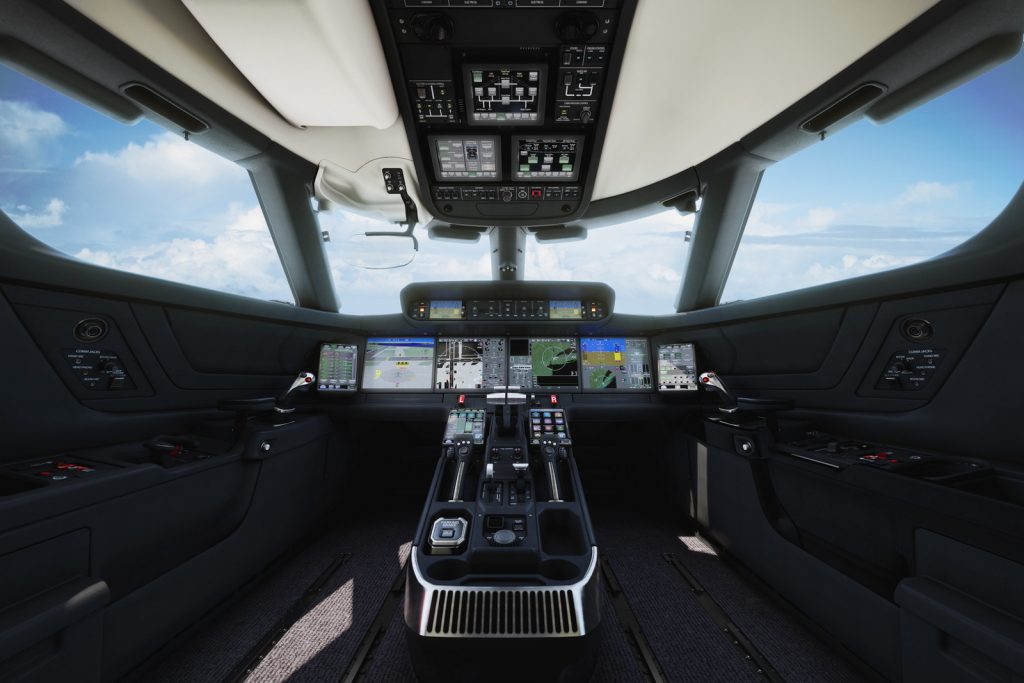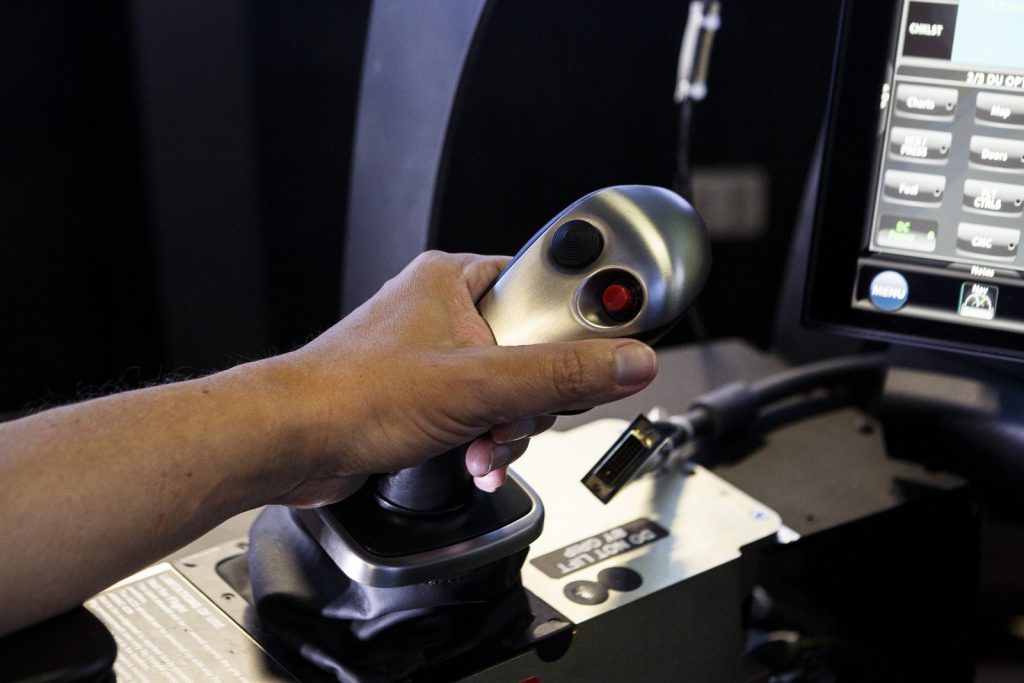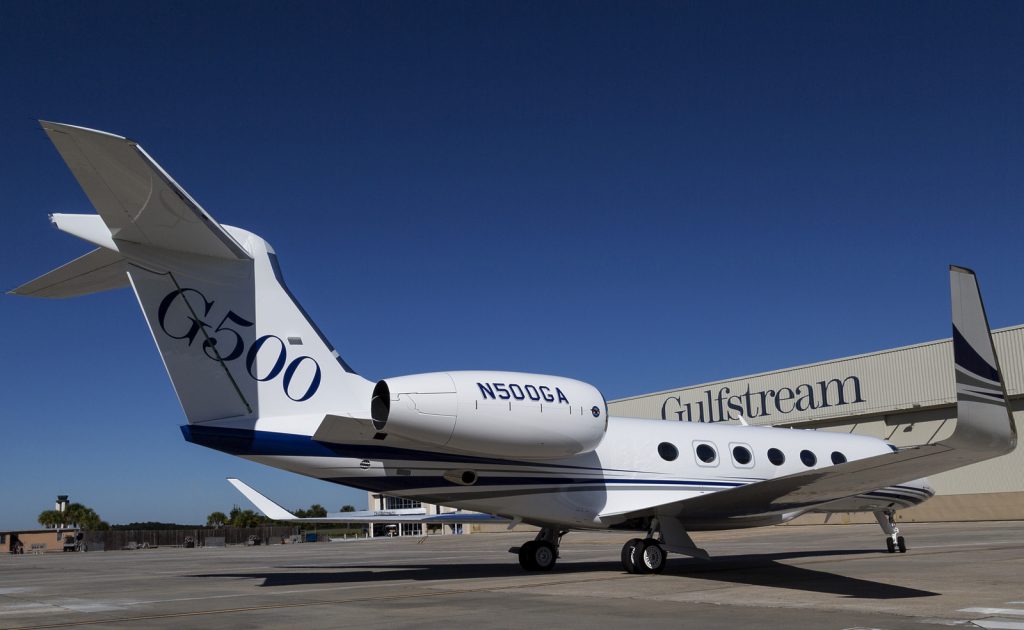Written for Airwaysmag.com
Pilots flying the upcoming Gulfstream G500 and G600 business jets will control their planes with an advanced version of the ubiquitous sidestick. In the first civil-aircraft installation of the technology, BAE Systems’ “Active Inceptor System,” not only provides pilots with tactile feedback, but the pilot’s and co-pilot’s sticks will be electronically coupled. The stick movements made by one pilot, or the autopilot, will be seen and felt by the other. In case you’re wondering, BAE uses the word “inceptor,” to describe “the controls that pilots use to direct and maneuver the aircraft.”
The vast majority of aircraft, big and small, have a mechanical connection between the pilot’s stick, or yoke, and the flight control surfaces – the ailerons for roll, elevator for pitch, and the rudder for yaw. When a pilot moves the yoke, not only will the linked co-pilot’s yoke move, but the pilot will feel the response of the control surfaces. In flight training, an instructor will say, “Follow me along on the controls,” and the student will see what the instructor is doing by watching the control wheel in front of her, and feel the feedback from the plane. It’s a useful and important process in learning how to fly.
Decades ago, beginning with Concorde, fly-by-wire (FBW) flight control systems began appearing in large, commercial aircraft. Simply, FBW replaces a mechanical connection from the cockpit with an electronic one. The pilot commands a roll by moving the stick, which is translated into a digital signal, sent by wire to an actuator attached to the aileron, which then moves. All Airbus jets from the A320 to the A380 are full FBW, as are Boeing’s 777 and 787. With FBW, flight system engineers can develop software that adapts to different phases of flight, along with flight envelope protections. That means that, in theory, the plane can protect itself, and its passengers, from extreme situations or pilot inputs.
The two airframers went down different paths in developing the pilots’ FBW control system. After all, with FBW, any kind of digital input device could be used to fly the plane, even an Xbox or Playstation controller. The pilots are essentially “flying” the computers with the FBW software, which then interprets the control inputs and sends the signals on. So, Boeing decided to maintain the legacy of linked control columns and yokes, and that’s what you’ll see in a 777 or 787 cockpit. In those planes, a pilot can see the controls move, whether it’s the other pilot or the autopilot flying. Airbus went a different route, and opened up the cockpit by using sidesticks, mounted just below the side windows, beside each pilots’ seat.
The Airbus sidesticks, and those in other similar sidestick equipped FBW aircraft are passive. The pilots don’t get any feedback, and the two sticks aren’t linked. The sticks don’t move when the autopilot is flying, either. And with the millions and millions and millions of safe, sidestick flight hours, it’s clear that this is a technology that works. But commercial pilots will often be in the Boeing-yoke or Airbus-sidestick camp, with a major preference for the FBW philosophy, design, and control of one or the other.
Much has been written, of late, about pilot training and the handling of in-flight emergencies, such as in the tragic crashes of AF447 and AirAsia 8501. Some believe that passive sidesticks don’t communicate enough information to the crew. Others point to the programming and functionality of FBW software as a problem. But at the end of the day, it comes back to the ability of the flight crew to control the aircraft. Or unfortunately, the lack of ability, as shown by the crew of Colgan 3407, who stalled a non-FBW, yoke-equipped Bombardier Q400 into the ground in Buffalo, NY.
Gulfstream clearly believes in FBW technology, and the BAE system in the G500 and G600 are the first sidestick-controlled planes in the fleet. As the company says in its brochure, “Pilots will be drawn to the active control sidesticks. The controls replace the traditional pedestal mounted yoke, and provide increased visibility and improved pilot comfort.” Gulfstream has combined the BAE Active Inceptors with touch-screen technology into its Symmetry Flight Deck, showcasing the company’s “Intelligence-by-Wire,” integrated flight control system. The BAE’s Active Inceptor System is already flying in military applications, such as the F-35 Lightning II, and UH-60 and CH-53K helicopters. The system was also chosen for the Embraer KC-390 airlifter, which recently had its first flight.


